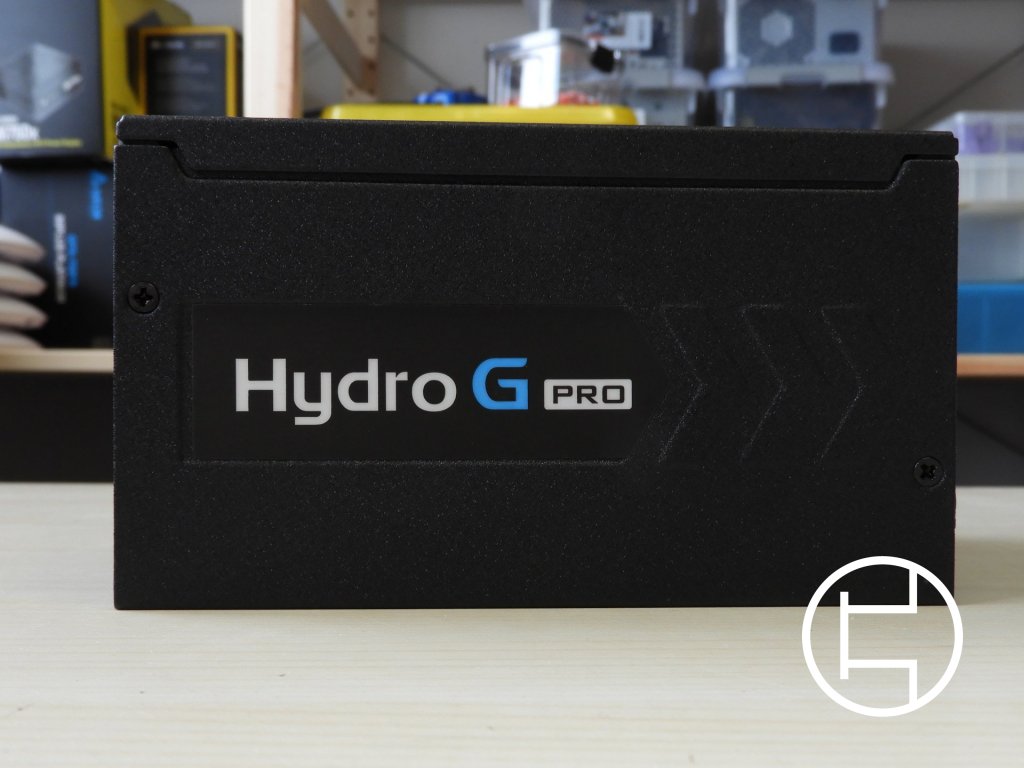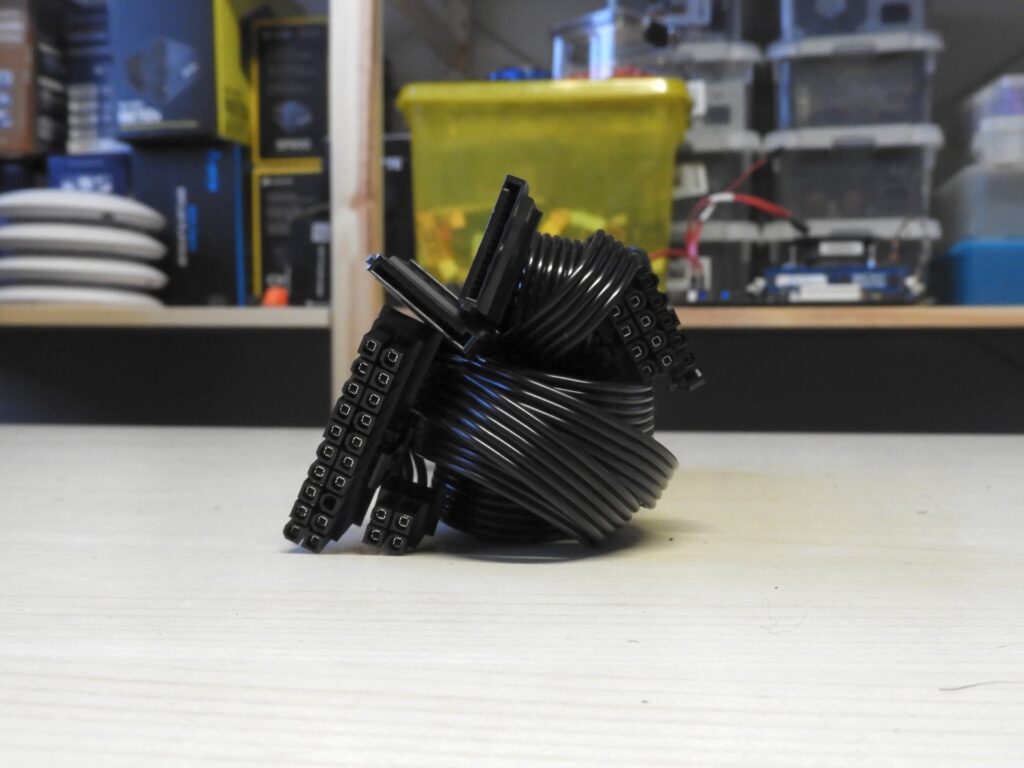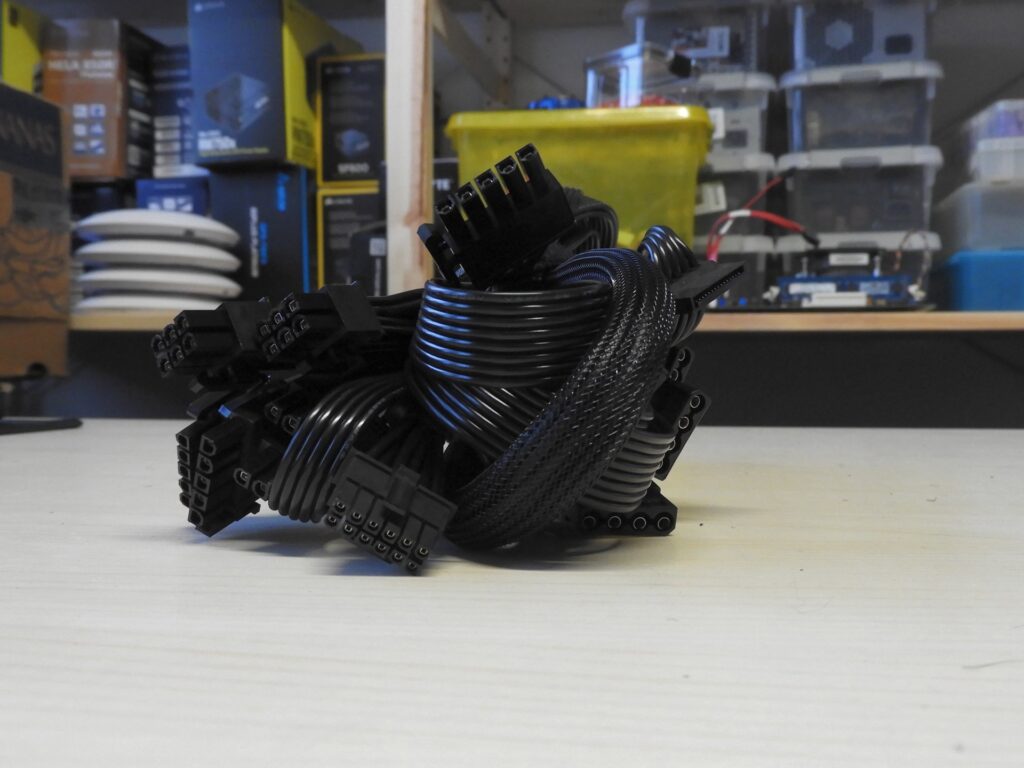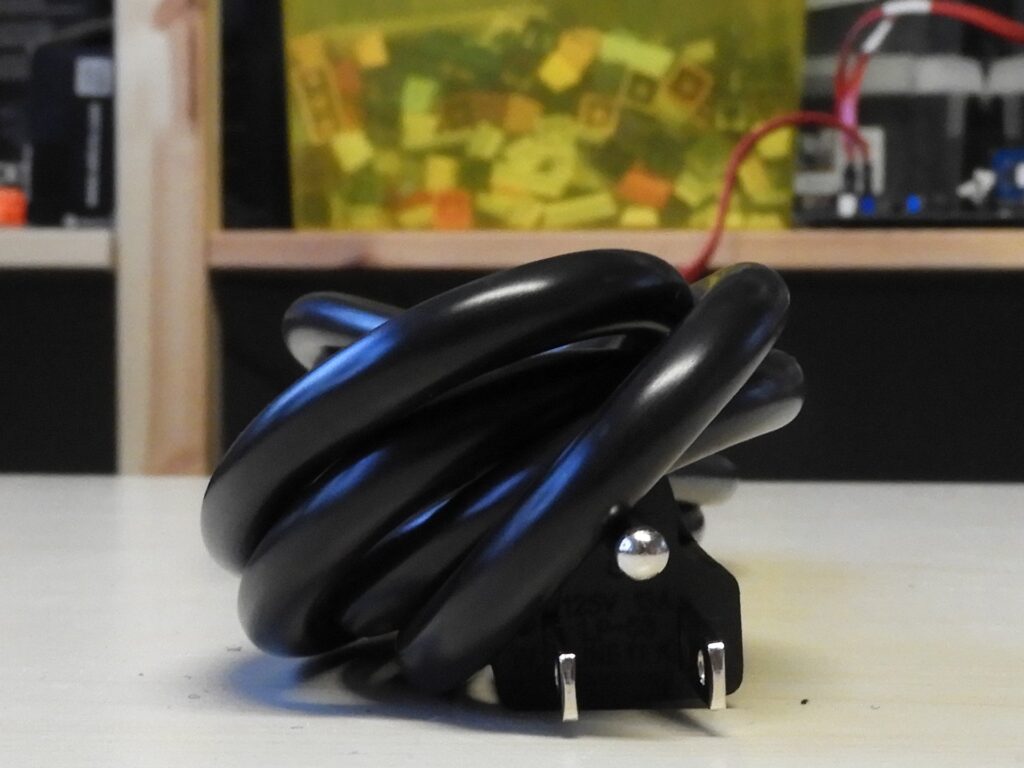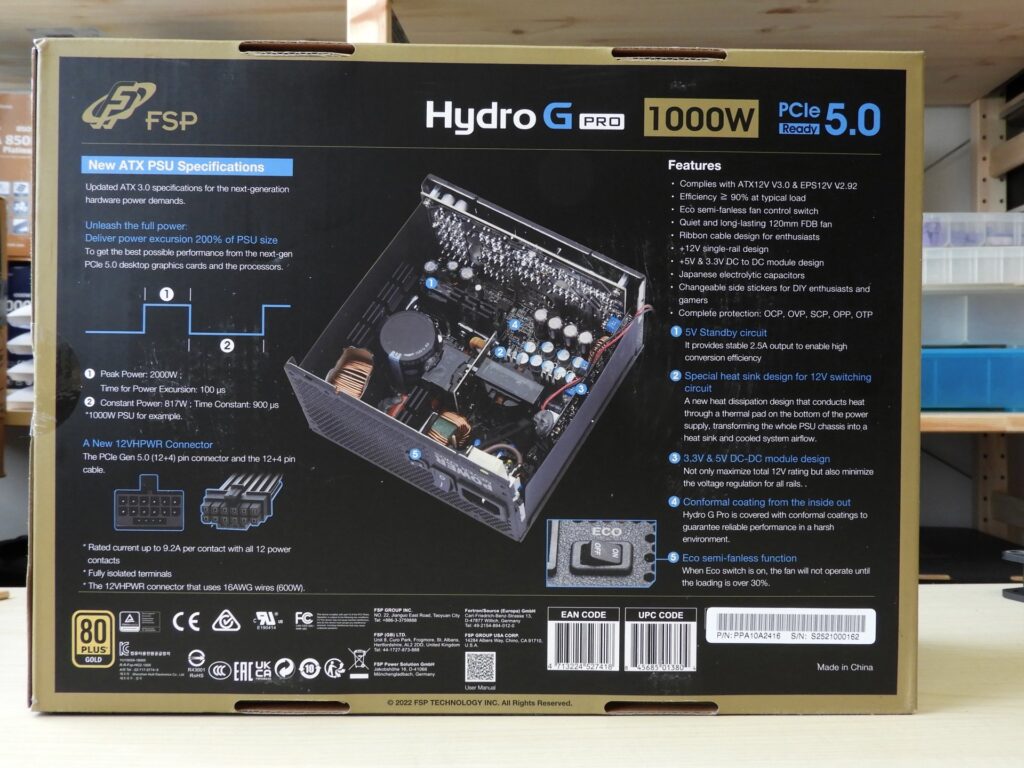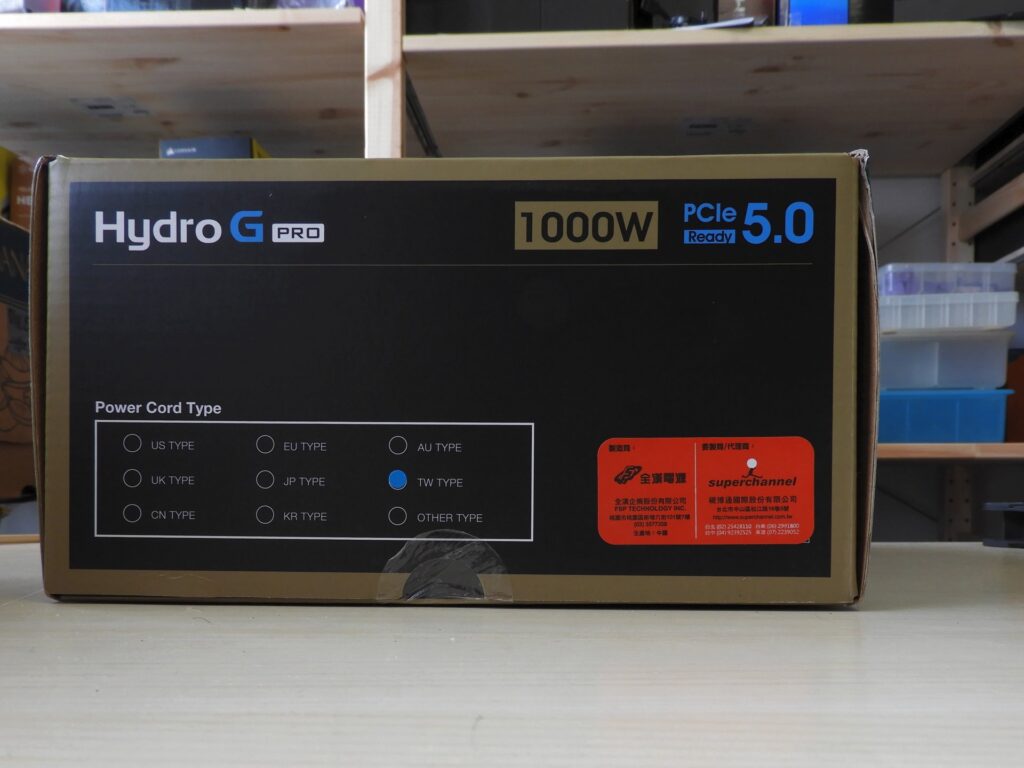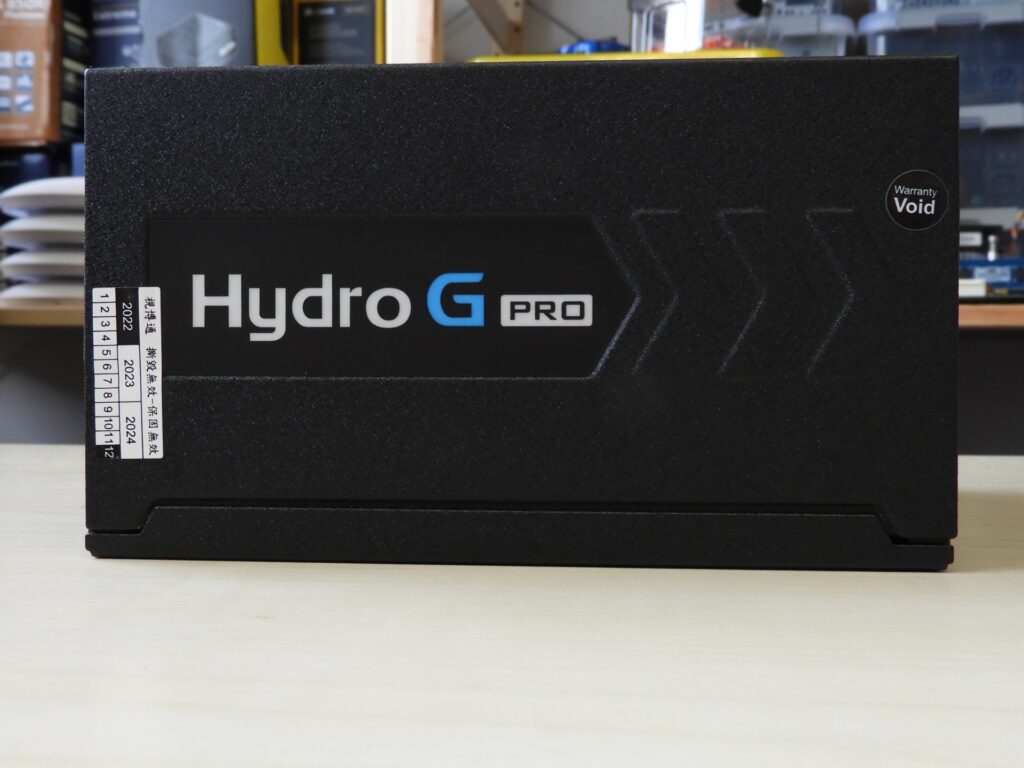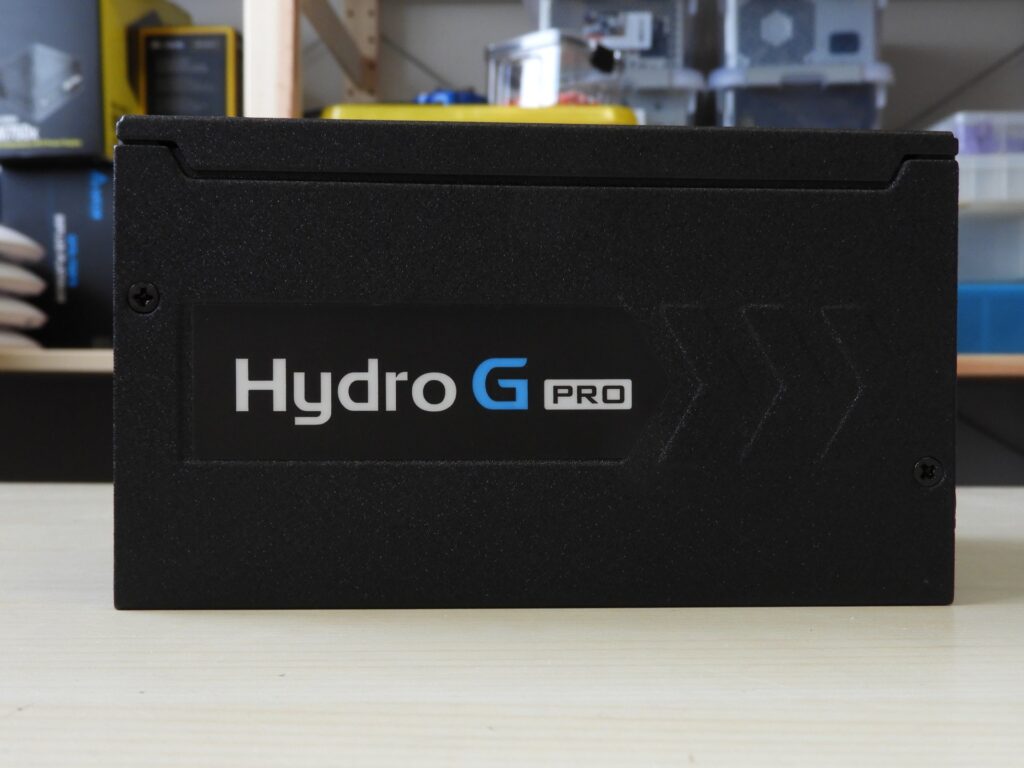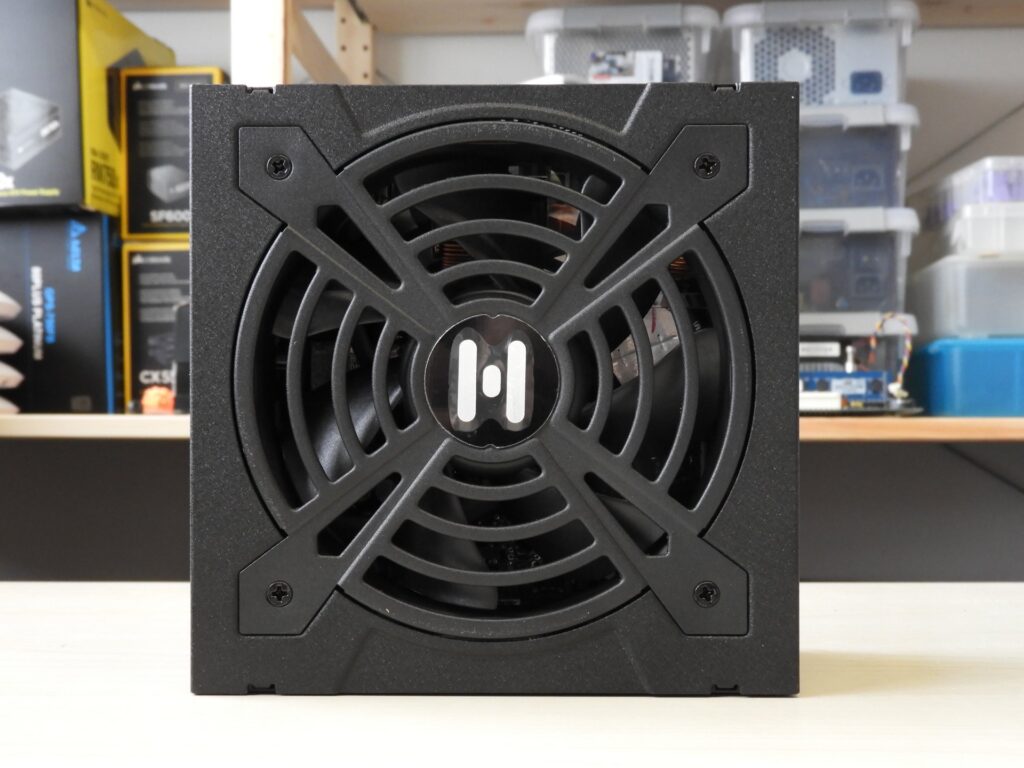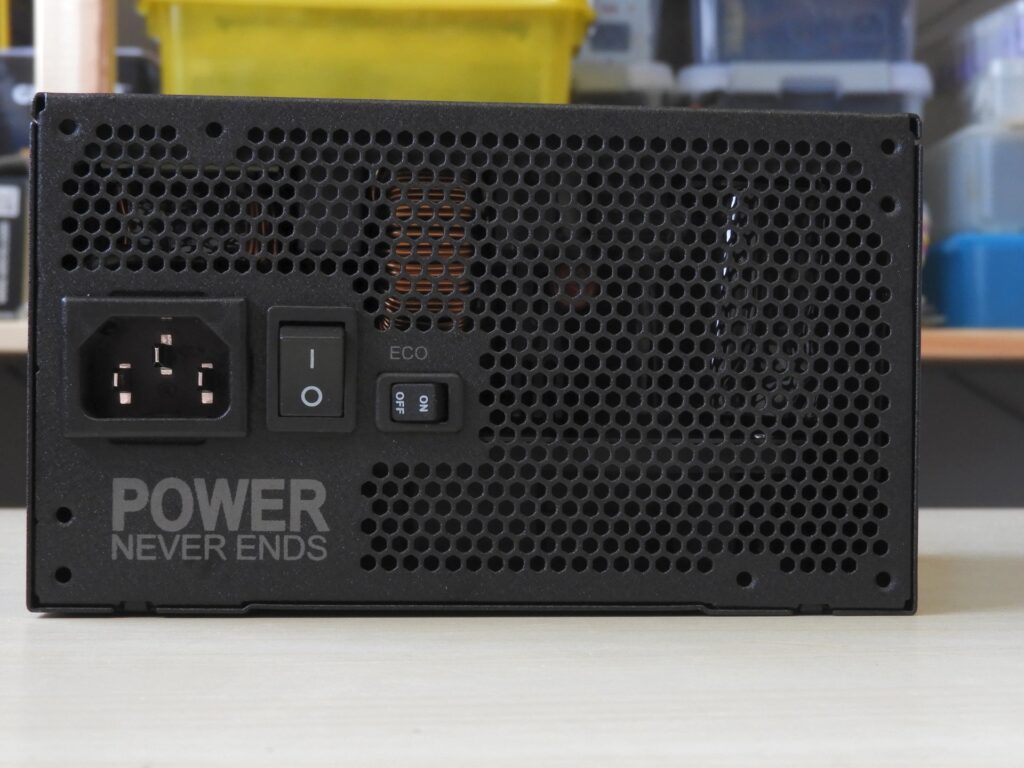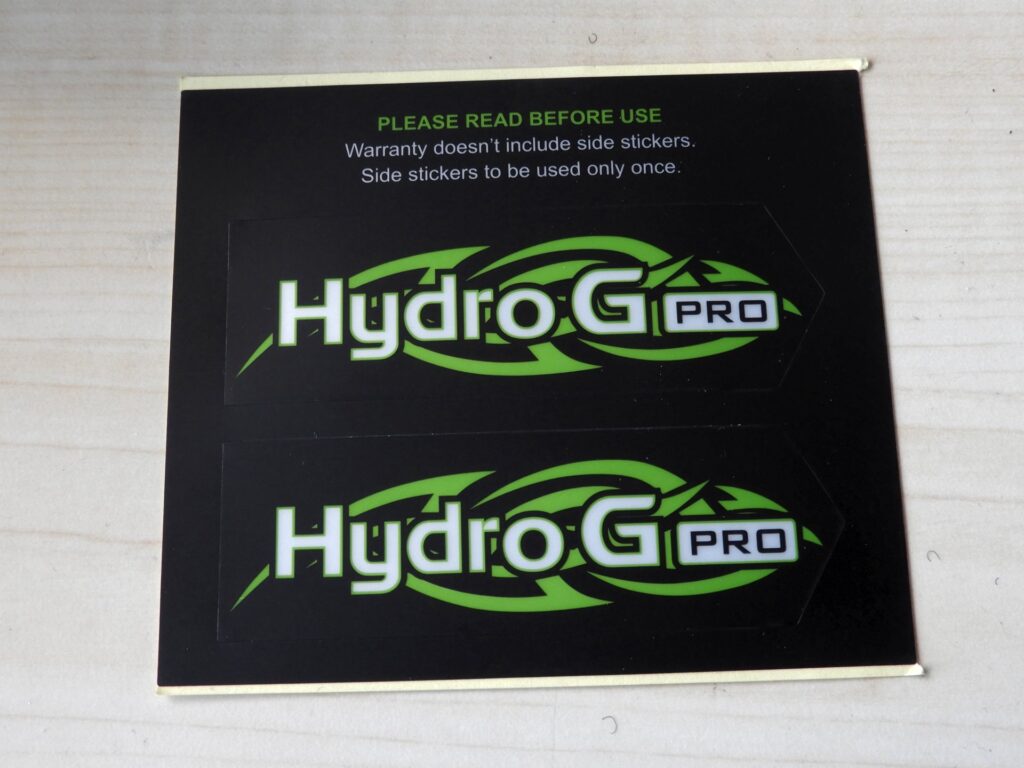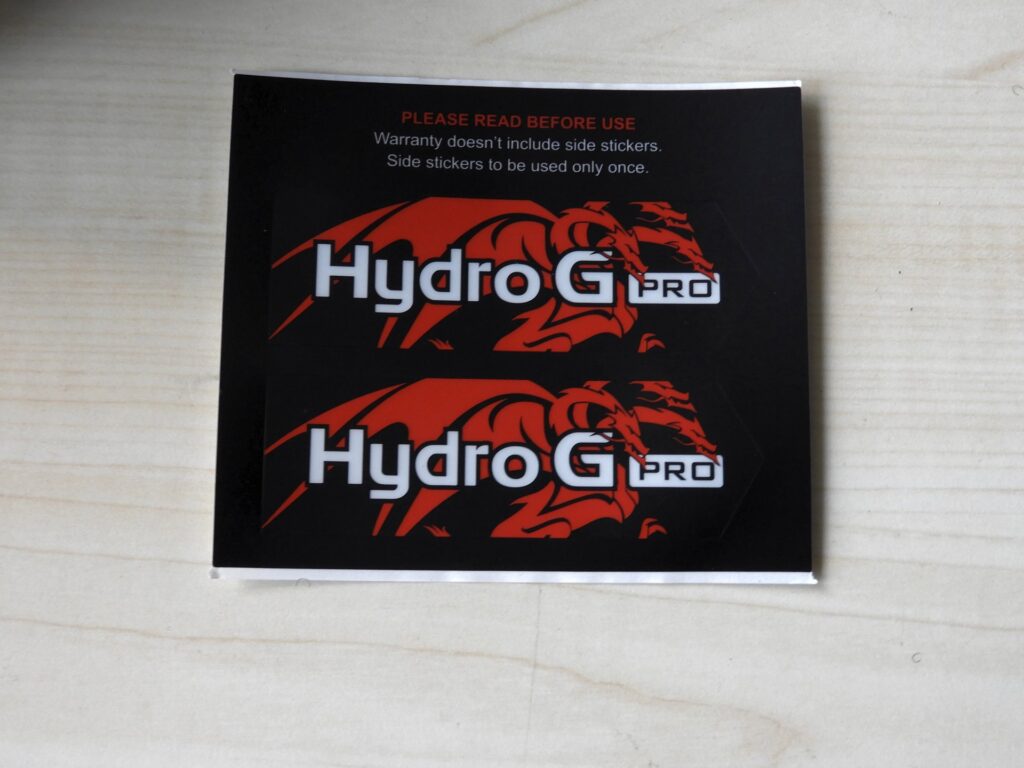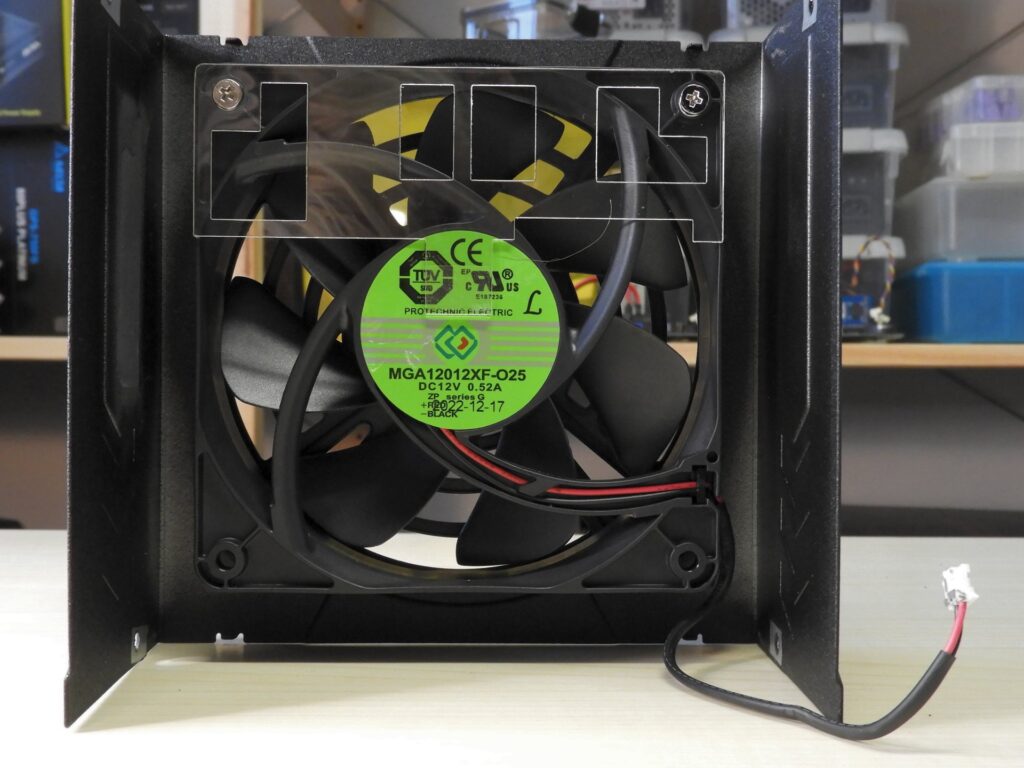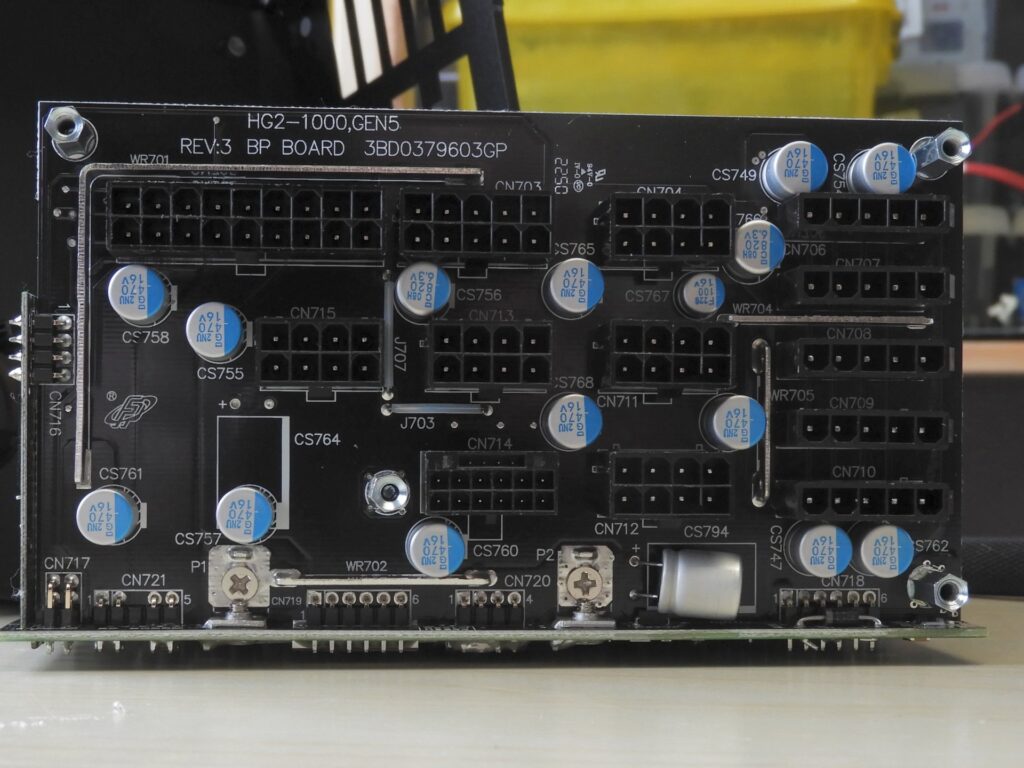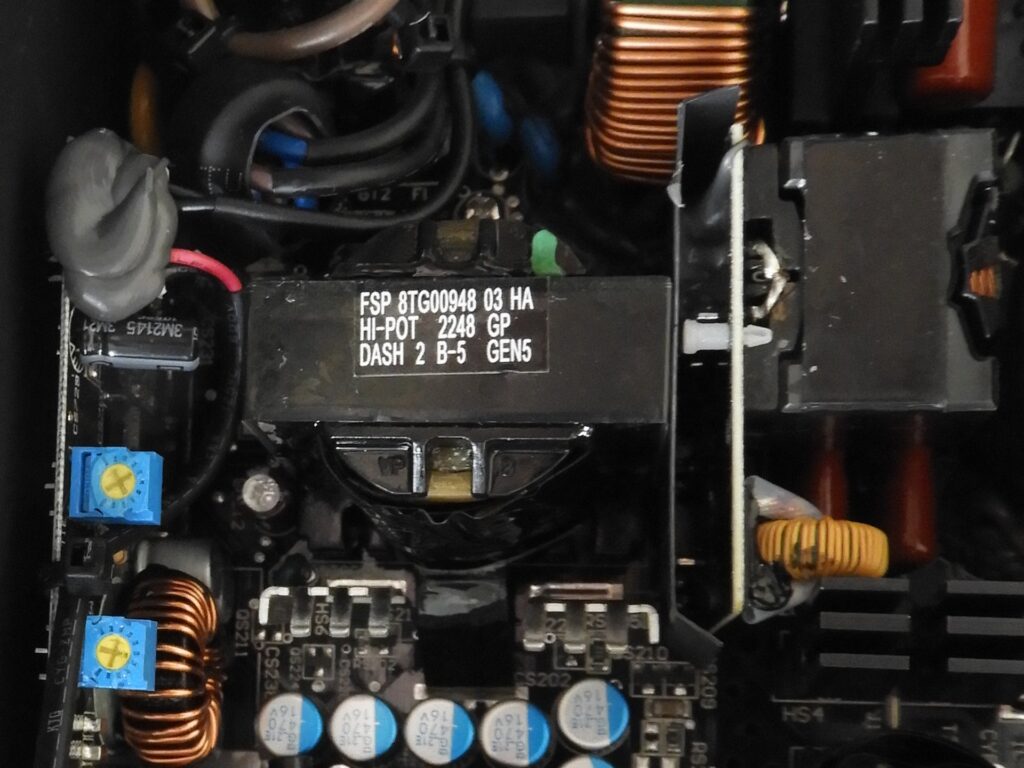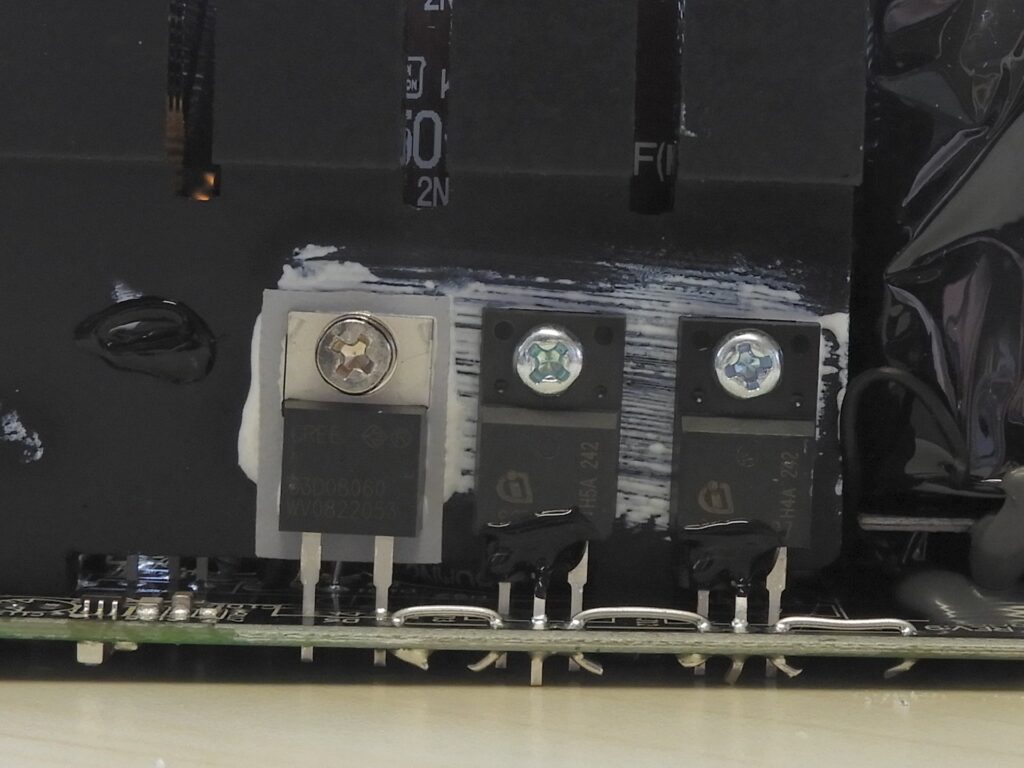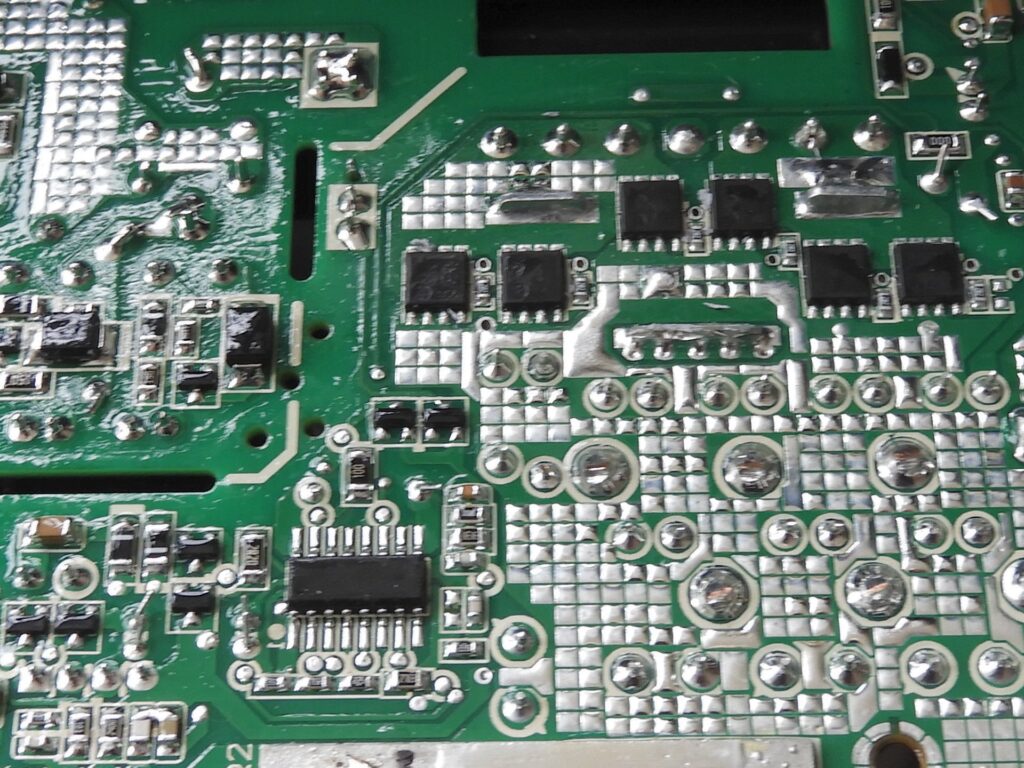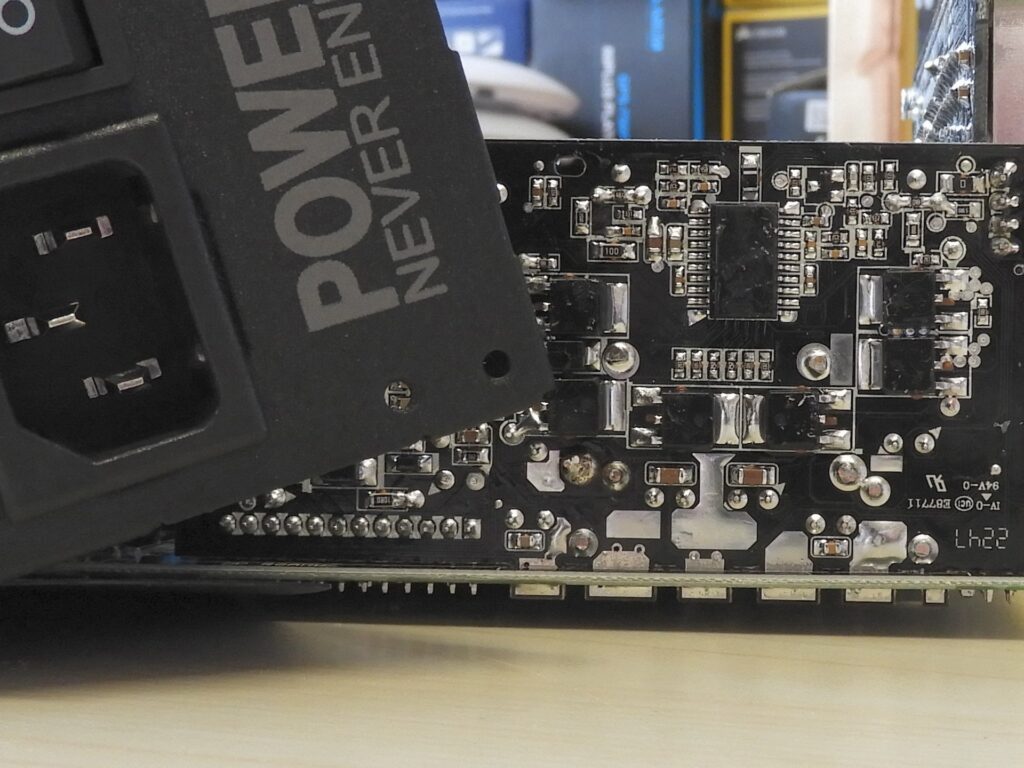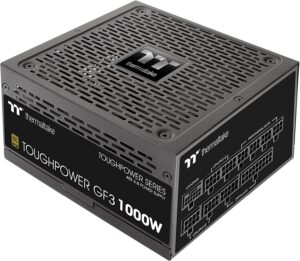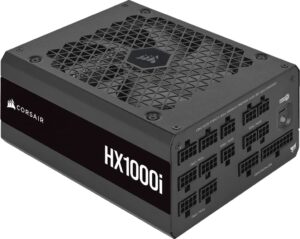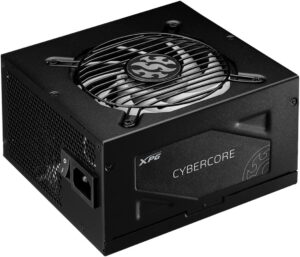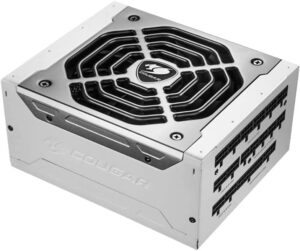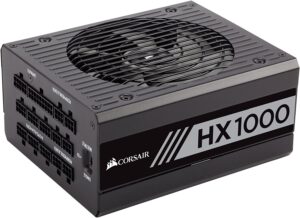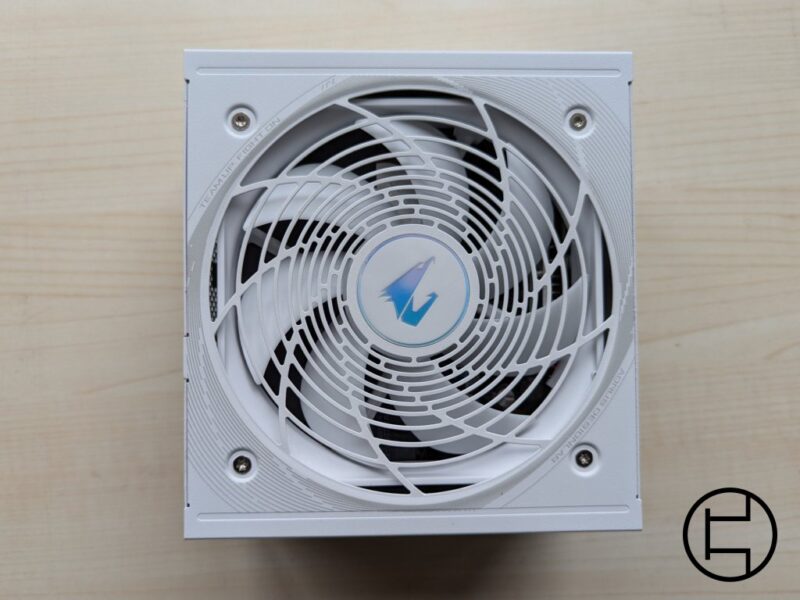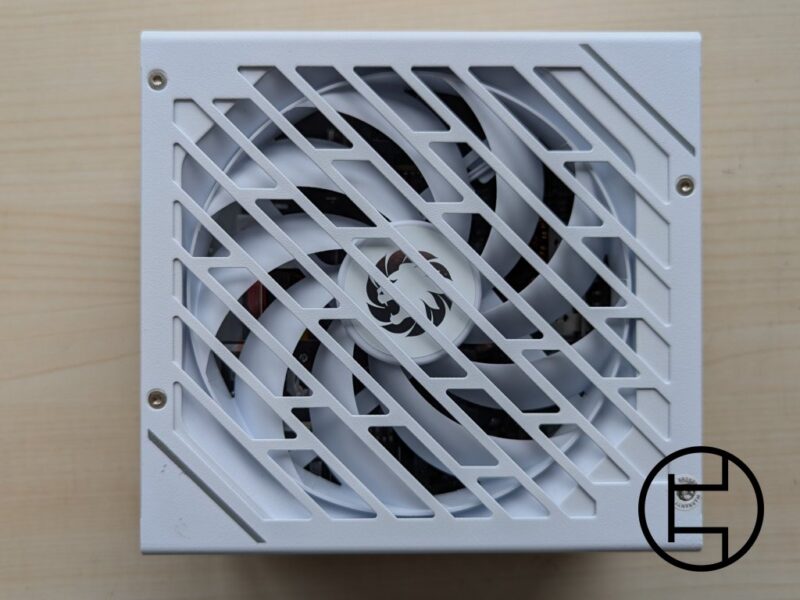Introduction
FSP has a bit of a special place in my heart. Back in 2003, my dad bought a desktop that would last him until over a decade later, still working to this day. Powering an XFX-made (yes kids, XFX used to work with Nvidia) Nvidia FX GPU and a Pentium 4 3GHZ was a simple FSP-300-60PN. It’s an awful unit by today’s standards, with almost double the capacity on 3.3v and 5v compared to 12v, a simple switch that could kill the unit within seconds if you decided it would be funny to switch it while it runs and the now extinct -5V rail still being used on it. But even if I wouldn’t let it power any of my rigs today, it has kept that desktop working to this day, and if I wanted to, could still let it power it.
But nostalgia aside, let’s take a step back. For those not familiar with FSP, strap yourself for the ride. This is to my best knowledge:
FSP group started out as Fortron Source USA, Sparkle Power International (SPI) Taiwan and Powertech Systems Taiwan. Simple enough, right? But what’s the fun at leaving it at that? In 2002, Powertech Systems split off FSP group, with Fortron Source and Sparkle Power acquiring Protek Power Taiwan, putting the P back in FSP (sorry not sorry). Over the years, FSP group has sold their PSUs under FSP, Fortron Power (mainly for US), Sparkle Power, SPI, Huili and Quanhan, but these days mostly under the FSP brand.
Outside of their own units, FSP can be found in three other categories:
- As an aftermarket PSU OEM for the likes of BeQuiet, EVGA, Antec, Silverstone, Cooler Master, NZXT and Thermaltake
- As an OEM for desktops and laptops from the likes of HP, Dell, Lenovo Acer, MSI, Asus, Toshiba and many others
- As an OEM for servers from the likes of HPE, Dell, Lenovo, Supermicro and many others
With that introduction out of the way, let’s get started with today’s unit, the refresh of the FSP Hydro G pro, the Hydro G pro ATX 3.0!
General Specifications
| Brand | FSP |
| Model | Hydro G Pro ATX 3.0 |
| Wattage | 1000W |
| Introduction year | 2022 |
| Modularity | Fully modular |
| Warranty | 10 years |
| Size | 150 x 85 x 150mm |
| ATX 3.0 Certified | Yes, Cybenetics |
Power Specifications
| 3.3V | 5V | 12V | 5VSB | -12V |
|---|---|---|---|---|
| 20a | 20a | 83.33a | 2.5a | 0.3a |
| 120w | 1000w | 12.5w | 3.6w |
Cables
| Cable type | Cable Quantity | Connector Per Cable | Gauge |
|---|---|---|---|
| ATX 20+4 pin | 1 | 1 | 18-22 AWG |
| EPS 4+4 pin | 2 | 1 | 18 AWG |
| PCIe Power 6+2 pin | 3 | 2 | 18 AWG |
| PCIe 12VHPWR 12+4 pin | 1 | 1 | 16-24 AWG |
| SATA Power | 2 | 4 | 18 AWG |
| SATA Power + Peripheral 4 pin | 2 | 2 / 2 | 18 AWG |
| SATA Power + Peripheral 4 pin + FDD 4 pin | 1 | 2 / 1 / 1 | 18 AWG |
While not visible in the table above, FSP did something… interesting with the PCIe power cables on the Hydro G pro ATX 3.0. While two of the cables are 65+15cm length, one of them is 15cm shorter. What reason FSP has for this, I honestly can’t quite figure out. But it’s nothing that would bother me when building with it, honestly. I’m already more than happy that FSP includes sufficient cables to put a high-end GPU like a 7900XTX on separate PCIe power cables, something a few other ATX 3.0 units have skipped over in favor of just two cables and a 12VHPWR cable. It would’ve been nice to see single connector cables, but this is rather uncommon to do.
Speaking of the 12VHPWR cable, this is the only cable that comes fully sleeved out of the box. It’s a bit stiff, but I’m honestly yet to see a first party cable that isn’t. It also includes two in-cable capacitors from what I can see, though I haven’t taken the sleeving off to check in risk of heavily damaging the cable.
FSP chose to include dual 4+4 pin EPS cables, which is to be expected out of a 1000w unit these days, given that they’re even sometimes supplied with as low as 650w PSUs (which is stupid because a single cable in the best case can already handle 480w on its own, but let’s not get too distracted here). Nothing to complain here, nothing out of the usual, pretty much as should be expected.
The total of fourteen SATA power connectors makes the Hydro G pro ATX 3.0 very much fun to play with for say a massive storage array at home. It’s not usual to see this much, though something like Corsair RM 2019/2021 (750w+), RMx 2021 (850w+), HX 2017 (750w+), FSP Hydro PTM (750w+), Seasonic Prime PX/TX (850w+), Vertex GX/PX (850w+) and many others are able to match or exceed this. The top position in this regard is held by Corsair (AX1500i), Cooler Master (MW Maker 1500w) and Thermaltake (DPS G RGB titanium 850w/1000w/1500w), though all three have been discontinued years ago.
The SATA cables are also combined with a total of five peripheral power connectors and even a single FDD power connector. This is mostly useful for legacy use more than anything, and I would’ve liked to have it separate from the SATA power cables, but I don’t mind it too much.
Overall, would’ve been nice to see FSP match the few companies that started using 16AWG and HCS more, but other than that… not bad!
External
“POWER NEVER ENDS”. From the side of the box as you open it to exhaust of the unit, FSP’s slogan comes back a few times on both the box and the PSU itself. It’s the very first thing I noticed when opening the box and… don’t know, it has something interesting to it.
Speaking of the box, it includes all you expect. Talk about the new ATX 3.0 specification and 12VHPWR connector, marketing around efficiency, DC-DC, semi-fanless mode, Japanese capacitors, compliance with EPS and ATX specifications and so on. Unlike most units however, it even shows an internal shot of the unit itself, though this one doesn’t look quite right. It shows a capacitor that looks to be made by Teapo, while my sample has a Nippon-Chemicon that physically looks very different. Then again, I won’t think much of this.
As you open the box, it’s divided into two sections. The left section includes the cables in a bag, a short instruction on seating the 12VHPWR connector correctly, two extra sets of stickers for the side, a few velcro straps, screws and a PSU tester (god bless). The right section is of course the unit itself, packed in foam to make sure the units gets to you in one piece. I really like the PSU tester being included. This is nothing more than a cover that goes over the 24 pin and shorts out the PWR_ON pin to a ground pin, causing the unit to turn on. This is what you normally do with a paperclip test, but this makes it way easier for an end user to do.
Now, to the unit itself. The Hydro G pro ATX 3.0 shows a relatively compact, but otherwise rather usual, but effective design we’ve seen FSP use many times before. The exhaust uses hexagons as it should (yes, I still didn’t create a hexagon cult), the unit is easy to open with just four screws on the side, of which two are covered by stickers. And speaking of stickers, as you have two extra sets of them, you can customize the look of the sides to your liking with either the stock blue or additional green and red stickers. This is something minor and probably something not that many users will utilize, as many modern cases cover the PSU entirely behind a shroud, but it’s a nice touch nonetheless.
As a final note, there’s a smaller switch next to the power on/off switch, that can be used to turn the semi-passive mode of the Hydro G pro ATX 3.0 on or off, and as a user that prefers always on, I really appreciate FSP giving a choice here.
Overall, no complaints worth mentioning here, solid job!
Protections
| AC OCP | ICE2PCS02G |
| AC UVP | ICE2PCS02G |
| DC OCP | APW7159C, WT7527RA |
| DC OVP | APW7159C, WT7527RA |
| DC UVP | APW7159C, WT7527RA |
| OTP | APW7159C, APW9010 |
| SCP | WT7527RA |
| MOV | Yes |
The protection coverage FSP went here with is pretty solid. (Is it me or am I starting to sound like Aris sometimes?)
The APFC controller (Infineon ICE2PCS02G) handles OCP (Over Current Protection) and UVP (Under Voltage Protection) on the AC side, protecting the unit from brownouts and pulling too much power from the wall.
DC OCP (Over Current Protection), OVP (Over Voltage Protection) and UVP (Under Voltage Protection) is handled by both the DC-DC controller (APW7159C) and the protection IC (WT7527RA).
OTP (Over Temperature Protection) is handled by either the fan controller (APW9010) or DC-DC controller (APW7159C), but I haven’t traced this back myself, these are estimates based off the datasheet.
SCP (Short Circuit Protection) seems to be handled by the protection IC (WT7527RA), though it could be the case that other controllers are supervising this as well.
FSP went with a really nice DC-DC controller here, only having to use a single one instead of the often used two lower end controllers on PSUs. Both are totally valid ways to achieve the same end goal, but a more overkill one like this also allows to integrate things like Over Temperature Protection straight into the controller. The APFC controller is rather old, but doesn’t lack anything noteworthy from what I could see and outside of just having a single OCP channel on 12V, where at this wattage I prefer to have multiple, I have nothing to complain here. Solid setup, just lacking multirail for my own liking.
Parts Breakdown+Internal
| OEM | FSP |
| Platform | HG2-1000 gen. 5 rev. 3 |
| Input Voltage | 100-240 VAC |
| Primary Converter | APFC Half-Bridge LLC |
| Rectifier | Synchronous Rectification |
| Regulator | DC-DC |
| Fan | Protechnic Electric MGA12012XF-O25 (ZP series G) |
| Bearing | Fluid Dynamic Bearing (FDB) |
| PCB Type | Double sided |
| Bulk Capacitor(s) | 1x Nippon Chemi-Con KHS (450V, 680uf, 105C) |
| Bridge Rectifiers | 2x HY GBJ2506 (600V, 25A @ 100°C) |
| APFC MOSFETs | 2x Infineon IPA60R120P7 (600V, 16A @ 100C) |
| APFC Boost Diode | 1x CREE C3D08060A (600V, 8A @ 150C) |
| APFC Controller | Infineon ICE2PCS02G* |
| LLC Resonant Controller | Champion CM6901T2X* |
| Main Switches | 2x Magnachip MMFT60R115PC (600V, 20.9A @ 100C) |
| 12v MOSFETs | 6x Infineon BSC014N04LSI (40V, 123A @ 100C)* |
| DC-DC Converters | 6x NEC 2SK3062-ZJ (60V, 70A) |
| DC-DC Controller | Anpec APW7159C* |
| Supervisor IC | Weltrend WT7527RA |
| Fan controller | Anpec APW9010* |
| 5VSB Rectifier | 1x CET CEF04N7G (700V, 4A) |
| 1x PFC P15L50SP SBR (50V, 15A) |
Just four screws on the side later, I can reveal the internals…
The Hydro G Pro ATX 3.0 is made by well… FSP! While not all OEMs use their own production lines for all of their units (Seasonic, Superflower, Cougar (HEC)), I’m yet to see an FSP unit that isn’t designed and assembled in their own factories. It uses the same base platform as the regular Hydro G pro, but as main change uses six Infineon BSC014N04LSI MOSFETs for 12V compared to the weaker Toshiba TPH1R306PL MOSFETs used on the Hydro G pro. Other parts seem to have stayed the same, but given there’s only one review that details the parts used, it’s hard to say if changes over time have been made or if parts not mentioned in said review are changed for the ATX 3.0 version.
An issue worth noting with identifying some of the parts here, is that multiple parts aren’t printed or have been covered with something that looks to be resin of some sort. I was unable to identify these parts even after scratching the resin off and cleaning it with IPA, so these are based off Aris’ review over at hwbusters. These parts are marked with a star at the end.
FSP went out of their way to source a fan from Protechnic Electric, a fan manufacturer mainly known for server grade fans, and are definitely a nice choice to see here. They’re far from cheap, but offer great reliability. A very respectable choice here, well above the average.
Speaking of not cheap, FSP also went with a Nippon Chemicon KHS series main capacitor rated for 450V. This allows the unit to use a higher voltage, making it ever so slightly more efficient. I generally don’t complain when manufacturers use 400V or 420V however, as there’s still a shortage on 450V capacitors.
Honestly, looking at the overall part choice FSP made here, I have nothing specific to complain about. They used high quality parts from well known brands, made changes compared to the regular Hydro G pro where it made sense and the only thing that annoyed me is it being hard identify for myself, but this isn’t something important for the end user at all.
Electrical Performance
The following results are by third party PSU lab Cybenetics. The results shown are based off the Hydro G pro ATX 3.0 report published on 18-10-2022.
Test Equipment
| Electronic Loads | Chroma 63601-5 x4 |
| Chroma 63600-2 x2 | |
| 63640-80-80 x20 | |
| 63610-80-20 x2 | |
| AC Sources | Chroma 6530 |
| Keysight AC6804B | |
| Power Analyzers | N4L PPA1530 x2 |
| Sound Analyzer | Bruel & Kjaer 2270 G4 |
| Microphone | Bruel & Kjaer Type 4955-A |
| Data Loggers | Picoscope TC-08 x2 |
| Labjack U3-HV x2 | |
| Tachometer | UNI-T UT372 x2 |
| Digital Multimeter | Keysight U1273AX |
| Fluke 289 | |
| Keithley 2015 - THD | |
| UPS | CyberPower OLS3000E 3kVA x2 |
| Transformer | 3kVA x2 |
Overall (115v)
| Average efficiency | 88,560% |
| Efficiency at 2% load | 67,969% |
| Average efficiency 5VSB | 79.337 |
| Standby power consumption (W) | 0,0714 |
| Average PF | 0,991 |
| Average noise output | 27.04 |
| Efficiency rating (ETA) | GOLD |
| Noise rating (LAMBDA) | A- |
Overall (230v)
| Average efficiency | 90,806% |
| Average efficiency 5VSB | 76,878% |
| Standby power consumption (W) | 0,1615 |
| Average PF | 0,966 |
| Average noise output | 26.84 dB(A) |
| Efficiency rating (ETA) | GOLD |
| Noise rating (LAMBDA) | A- |
Efficiency (115v)
| Load (115v) | Efficiency | AC (Watts) | DC (Watts) |
|---|---|---|---|
| 20w load | 66,894% | 29,883 | 19,99 |
| 40w load | 77,998% | 51,269 | 39,989 |
| 60w load | 82,921% | 72,342 | 59,987 |
| 80w load | 85,718% | 93,254 | 79,935 |
| 10% load | 86,868% | 115,1 | 99,985 |
| 20% load | 90,054% | 222,007 | 199,927 |
| 30% load | 90,868% | 330,115 | 299,968 |
| 40% load | 90,914% | 439,392 | 399,469 |
| 50% load | 90,573% | 551,124 | 499,168 |
| 60% load | 90,113% | 665,492 | 599,697 |
| 70% load | 89,454% | 781,873 | 699,419 |
| 80% load | 88,671% | 901,563 | 799,425 |
| 90% load | 87,795% | 1024,191 | 899,187 |
| 100% load | 86,809% | 1151,846 | 999,906 |
| 110% load | 85,485% | 1286,444 | 1099,721 |
| Crossload 1 | 82,990% | 146,129 | 121,272 |
| Crossload 2 | 81,742% | 124,028 | 101,383 |
| Crossload 3 | 77,266% | 87,185 | 67,364 |
| Crossload 4 | 87,427% | 1143,59 | 999,805 |
Efficiency (230v)
| Load (230v) | Efficiency | AC (Watts) | DC (Watts) |
|---|---|---|---|
| 20w load | 67,834% | 29,46 | 19,984 |
| 40w load | 79,219% | 50,474 | 39,985 |
| 60w load | 84,242% | 71,204 | 59,984 |
| 80w load | 87,024% | 91,834 | 79,918 |
| 10% load | 88,209% | 113,33 | 99,967 |
| 20% load | 91,572% | 218,295 | 199,898 |
| 30% load | 92,393% | 324,628 | 299,935 |
| 40% load | 92,551% | 431,506 | 399,364 |
| 50% load | 92,478% | 539,872 | 499,265 |
| 60% load | 92,233% | 650,262 | 599,759 |
| 70% load | 91,899% | 761,078 | 699,424 |
| 80% load | 91,406% | 874,56 | 799,404 |
| 90% load | 90,876% | 989,423 | 899,15 |
| 100% load | 90,324% | 1106,97 | 999,857 |
| 110% load | 89,551% | 1227,993 | 1099,678 |
| Crossload 1 | 84,497% | 143,516 | 121,266 |
| Crossload 2 | 83,200% | 121,848 | 101,378 |
| Crossload 3 | 78,623% | 85,675 | 67,36 |
| Crossload 4 | 90,911% | 1099,822 | 999,864 |
Voltage Regulation (115v)
| Load (115v) | 12V (voltage) | 5V (voltage) | 3.3V (voltage) | 5VSB (voltage) |
|---|---|---|---|---|
| 20w load | 12.312V | 5.062V | 3.359V | 5.166V |
| 40w load | 12.279V | 5.061V | 3.358V | 5.162V |
| 60w load | 12.268V | 5.061V | 3.357V | 5.157V |
| 80w load | 12.266V | 5.06V | 3.356V | 5.153V |
| 10% load | 12.273V | 5.058V | 3.355V | 5.133V |
| 20% load | 12.262V | 5.054V | 3.351V | 5.119V |
| 30% load | 12.252V | 5.051V | 3.348V | 5.106V |
| 40% load | 12.243V | 5.047V | 3.345V | 5.093V |
| 50% load | 12.233V | 5.043V | 3.341V | 5.079V |
| 60% load | 12.220V | 5.036V | 3.336V | 5.062V |
| 70% load | 12.209V | 5.031V | 3.332V | 5.047V |
| 80% load | 12.197V | 5.027V | 3.328V | 5.036V |
| 90% load | 12.185V | 5.023V | 3.324V | 5.026V |
| 100% load | 12.174V | 5.018V | 3.321V | 5.016V |
| 110% load | 12.161V | 5.014V | 3.316V | 5.009V |
| Crossload 1 | 12.264V | 5.042V | 3.34V | 5.156V |
| Crossload 2 | 12.270V | 5.048V | 3.349V | 5.164V |
| Crossload 3 | 12.260V | 5.061V | 3.348V | 5.16V |
| Crossload 4 | 12.184V | 5.031V | 3.331V | 5.118V |
Voltage Regulation (230v)
| Load (230v) | 12V (voltage) | 5V (voltage) | 3.3V (voltage) | 5VSB (voltage) |
|---|---|---|---|---|
| 20w load | 12.310V | 5.061V | 3.358V | 5.165V |
| 40w load | 12.278V | 5.06V | 3.357V | 5.161V |
| 60w load | 12.266V | 5.06V | 3.357V | 5.157V |
| 80w load | 12.264V | 5.06V | 3.356V | 5.153V |
| 10% load | 12.272V | 5.058V | 3.355V | 5.134V |
| 20% load | 12.261V | 5.054V | 3.351V | 5.12V |
| 30% load | 12.254V | 5.052V | 3.348V | 5.106V |
| 40% load | 12.244V | 5.048V | 3.345V | 5.093V |
| 50% load | 12.231V | 5.041V | 3.339V | 5.074V |
| 60% load | 12.218V | 5.035V | 3.335V | 5.061V |
| 70% load | 12.208V | 5.032V | 3.332V | 5.047V |
| 80% load | 12.197V | 5.028V | 3.328V | 5.036V |
| 90% load | 12.186V | 5.024V | 3.324V | 5.026V |
| 100% load | 12.174V | 5.019V | 3.321V | 5.016V |
| 110% load | 12.162V | 5.015V | 3.317V | 5.01V |
| Crossload 1 | 12.264V | 5.044V | 3.341V | 5.157V |
| Crossload 2 | 12.271V | 5.049V | 3.349V | 5.164V |
| Crossload 3 | 12.260V | 5.06V | 3.348V | 5.16V |
| Crossload 4 | 12.184V | 5.03V | 3.331V | 5.117V |
Ripple (115v)
| Test | 12V | 5V | 3.3V | 5VSB | Pass/Fail |
|---|---|---|---|---|---|
| 10% Load | 16.93mV | 8.39mV | 7.79mV | 9.61mV | Pass |
| 20% Load | 27.95mV | 13.57mV | 15.77mV | 43.06mV | Pass |
| 30% Load | 24.35mV | 12.81mV | 13.09mV | 36.33mV | Pass |
| 40% Load | 14.11mV | 8.28mV | 8.14mV | 9.26mV | Pass |
| 50% Load | 29.41mV | 12.85mV | 17.44mV | 38.96mV | Pass |
| 60% Load | 14.91mV | 9.00mV | 10.57mV | 10.98mV | Pass |
| 70% Load | 32.23mV | 14.99mV | 19.01mV | 38.15mV | Pass |
| 80% Load | 15.93mV | 10.82mV | 14.00mV | 11.69mV | Pass |
| 90% Load | 27.14mV | 15.96mV | 19.92mV | 36.33mV | Pass |
| 100% Load | 23.02mV | 11.90mV | 16.22mV | 14.22mV | Pass |
| 110% Load | 23.81mV | 11.90mV | 17.12mV | 14.49mV | Pass |
| Crossload1 | 18.81mV | 14.80mV | 14.84mV | 10.45mV | Pass |
| Crossload2 | 16.48mV | 12.09mV | 10.57mV | 9.82mV | Pass |
| Crossload3 | 24.35mV | 12.15mV | 15.62mV | 36.99mV | Pass |
| Crossload4 | 23.08mV | 11.18mV | 15.07mV | 13.88mV | Pass |
Ripple (230v)
| Test | 12V | 5V | 3.3V | 5VSB | Pass/Fail |
|---|---|---|---|---|---|
| 10% Load | 42.91mV | 15.86mV | 16.13mV | 42.86mV | Pass |
| 20% Load | 35.32mV | 15.45mV | 14.71mV | 41.80mV | Pass |
| 30% Load | 12.07mV | 6.81mV | 8.24mV | 9.87mV | Pass |
| 40% Load | 36.18mV | 16.46mV | 18.20mV | 43.21mV | Pass |
| 50% Load | 29.97mV | 13.32mV | 15.78mV | 38.71mV | Pass |
| 60% Load | 35.24mV | 16.11mV | 17.95mV | 41.54mV | Pass |
| 70% Load | 33.67mV | 16.67mV | 15.57mV | 43.42mV | Pass |
| 80% Load | 16.23mV | 10.82mV | 14.51mV | 11.54mV | Pass |
| 90% Load | 29.06mV | 13.87mV | 19.41mV | 37.34mV | Pass |
| 100% Load | 23.60mV | 15.36mV | 16.52mV | 13.81mV | Pass |
| 110% Load | 24.70mV | 12.19mV | 17.50mV | 15.22mV | Pass |
| Crossload1 | 18.26mV | 16.19mV | 13.85mV | 10.34mV | Pass |
| Crossload2 | 35.32mV | 16.21mV | 16.68mV | 37.39mV | Pass |
| Crossload3 | 27.34mV | 11.74mV | 14.11mV | 36.43mV | Pass |
| Crossload4 | 23.33mV | 12.58mV | 15.07mV | 13.04mV | Pass |
Fan Speed/Noise (115v)
| Load (115v) | RPM | Noise (DBa) | Temperature in | Temperature out |
|---|---|---|---|---|
| 20w load | 0 | <6.0 | 40.19°C | 37.07°C |
| 40w load | 0 | <6.0 | 40.82°C | 37.46°C |
| 60w load | 0 | <6.0 | 41.82°C | 38.06°C |
| 80w load | 0 | <6.0 | 44.08°C | 40.1°C |
| 10% load | 0 | <6.0 | 45.28°C | 40.96°C |
| 20% load | 0 | <6.0 | 46.2°C | 41.46°C |
| 30% load | 0 | <6.0 | 47.36°C | 42.01°C |
| 40% load | 0 | <6.0 | 48.52°C | 42.77°C |
| 50% load | 1033 | 24.6 | 43.18°C | 49.19°C |
| 60% load | 1035 | 24.6 | 43.49°C | 50.23°C |
| 70% load | 1076 | 25.7 | 43.78°C | 51.25°C |
| 80% load | 1509 | 35.8 | 44.23°C | 52.25°C |
| 90% load | 1882 | 43.3 | 45.2°C | 54.29°C |
| 100% load | 2276 | 47.5 | 45.83°C | 55.85°C |
| 110% load | 2687 | 51.0 | 46.5°C | 57.42°C |
| Crossload 1 | 0 | <6.0 | 48.26°C | 42.74°C |
| Crossload 2 | 939 | 21.6 | 43.89°C | 50.99°C |
| Crossload 3 | 0 | <6.0 | 52.64°C | 44.56°C |
| Crossload 4 | 2019 | 44.4 | 45.29°C | 55.21°C |
Fan Speed/Noise (230v)
| Load (230v) | RPM | Noise (DBa) | Temperature in | Temperature out |
|---|---|---|---|---|
| 20w load | 0 | <6.0 | 39.72°C | 36.61°C |
| 40w load | 0 | <6.0 | 41.78°C | 38.5°C |
| 60w load | 0 | <6.0 | 42.51°C | 39.01°C |
| 80w load | 0 | <6.0 | 43.1°C | 39.24°C |
| 10% load | 0 | <6.0 | 44.35°C | 40.11°C |
| 20% load | 0 | <6.0 | 45.29°C | 40.62°C |
| 30% load | 0 | <6.0 | 46.62°C | 41.48°C |
| 40% load | 0 | <6.0 | 47.26°C | 41.62°C |
| 50% load | 0 | <6.0 | 48.82°C | 42.88°C |
| 60% load | 1032 | 24.5 | 42.95°C | 49.36°C |
| 70% load | 1152 | 27.8 | 43.47°C | 50.54°C |
| 80% load | 1682 | 39.4 | 44.33°C | 52.39°C |
| 90% load | 1999 | 43.9 | 44.65°C | 53.66°C |
| 100% load | 2366 | 48.1 | 45.12°C | 55.2°C |
| 110% load | 2788 | 51.6 | 46.61°C | 57.52°C |
| Crossload 1 | 1027 | 24.4 | 42.33°C | 48.81°C |
| Crossload 2 | 0 | <6.0 | 50.75°C | 43.66°C |
| Crossload 3 | 0 | <6.0 | 52.69°C | 44.62°C |
| Crossload 4 | 2088 | 46.1 | 45.63°C | 55.54°C |
Hold-up Time (230v)
| Hold-up time (ms) | 20.4 |
| AC loss to PWR-OK hold up time (ms) | 17.4 |
| PWR_OK inactive to DC loss delay (ms) | 3 |
Conclusion
Just like the Hela 1200R we reviewed recently, the Hydro G Pro ATX 3.0 comes in at just 150mm depth, so I would’ve tolerated the noise performance of it, but surprisingly it comes up pretty highly in that regard. FSP went with a solid part choice, build quality and exceptionally high-end fan choice, went successfully through ATX 3.0 testing over at Cybenetics, includes a native 12VHWPR cable while still keeping enough PCIe power cables to use GPUs like a 7900XTX with individual cables, supports ALPM (Alternative Low Power Mode) and has both a semi-passive and always spinning mode.
That doesn’t mean it’s perfect, however. A lot of the competition uses a higher wire gauge and terminals that allow for more current to go through the cable, which is definitely something you need for daisy chaining PCIe power cables, and can be useful for EPS power, even if it’s not needed as much there with many boards having two while housing CPUs that can’t even pull close to the limit of a single cable.
The low load efficiency isn’t poor per se, but behind its direct competition, something that with the higher and higher power costs would be nice to see getting a boost. Voltage regulation isn’t that bad either, just behind others at this pricepoint. The multirail OCP is my own controversial point, as it does cost more to integrate and is more prone to the user configuring it incorrectly, but I do consider it something nice to have with higher wattage PSUs.
Now, of course the final question I ask myself every time… Should you pick one up? Sure! It’s pretty compact, silent, includes all the connectors you need for a high end system or even a storage server and even has a native 12VHPWR connector. But it’s also not your only option, so I would also suggest looking at the alternatives below.
FSP Hydro G Pro ATX 3.0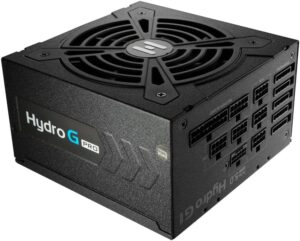
Buy Hydro G Pro ATX 3.0
- Fully tested and certified for ATX 3.0 compatibility
- Compact at 150mm depth
- Solid build quality
- Great part choice
- Great noise normalized performance, especially given its size
- Native 600W 12VHPWR cable
- Semi-passive and always spinning modes
- Solid ripple suppression
- ALPM support
- 16AWG + HCS would've been a nice touch
- Low load efficiency should be better
- Voltage regulation is a bit loose compared to direct competition
- No multirail OCP
Alternatives
- Native 12VHPWR cable
- ATX 3.0 certified by Cybenetics
- No multirail OCP
- Less compact
- Native 12VHPWR cable
- ATX 3.0 certified by Cybenetics
- No multirail OCP
- Less compact
Corsair RMe
Buy RM1000e
- Compatible with Corsair 12VHPWR cable
- ATX 3.0 certified by Intel
- More compact
- No included 12VHPWR cable
- No multirail OCP
- Configurable multirail OCP
- 16 AWG+HCS terminals
- ATX 3.0 certified by Intel
- Compatible with Corsair 12VHPWR cable
- Digital readout via icue
- No native 12VHPWR cable included (yet)
- Less compact
Silverstone Hela 1200R
Buy Hela 1200R
- Native 12VHPWR cable
- 16 AWG+HCS terminals
- Semi-passive and always spinning mode
- ATX 3.0 certified by Cybenetics
- Reviewed by us
- Just as compact
- No multirail OCP
- Native 12VHPWR cable
- ATX 3.0 certified by Cybenetics
- No multirail OCP
- Less compact
Corsair RMx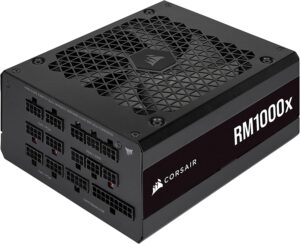
Buy RM1000x
- 16 AWG+HCS terminals
- Compatible with Corsair 12VHPWR cable
- No included 12VHPWR cable
- No ATX 3.0 compatibility
- No multirail OCP
BeQuiet Pure Power 11 FM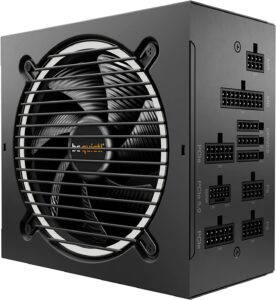
Buy PP11 FM 1000w
- Compatible with BeQuiet 12VHPWR cable
- No included 12VHPWR cable
- No ATX 3.0 compatibility
- Less compact
- Pure Power 12 FM replaces it, but hasn't been covered sufficiently yet
NZXT C-series 2022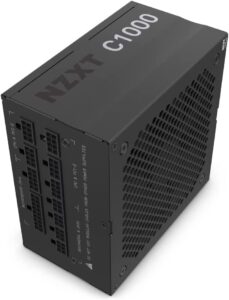
Buy C1000
- 16 AWG+HCS terminals
- As compact
- No included or first party 12VHPWR cable (except 1200w version)
- No ATX 3.0 compatibility (except 1200w version)
- 16 AWG+HCS terminals
- Compatible with Corsair 12VHPWR cable
- No included 12VHPWR cable
- No ATX 3.0 compatibility
- Refresh planned
- Less compact
- Incredibly quiet
- No included or first party 12VHPWR cable
- No ATX 3.0 compatibility
- Less compact
- Configurable multirail OCP
- 16 AWG+HCP terminals
- Compatible with Corsair 12VHPWR cable
- No included 12VHPWR cable
- No ATX 3.0 compatibility
- Less compact
